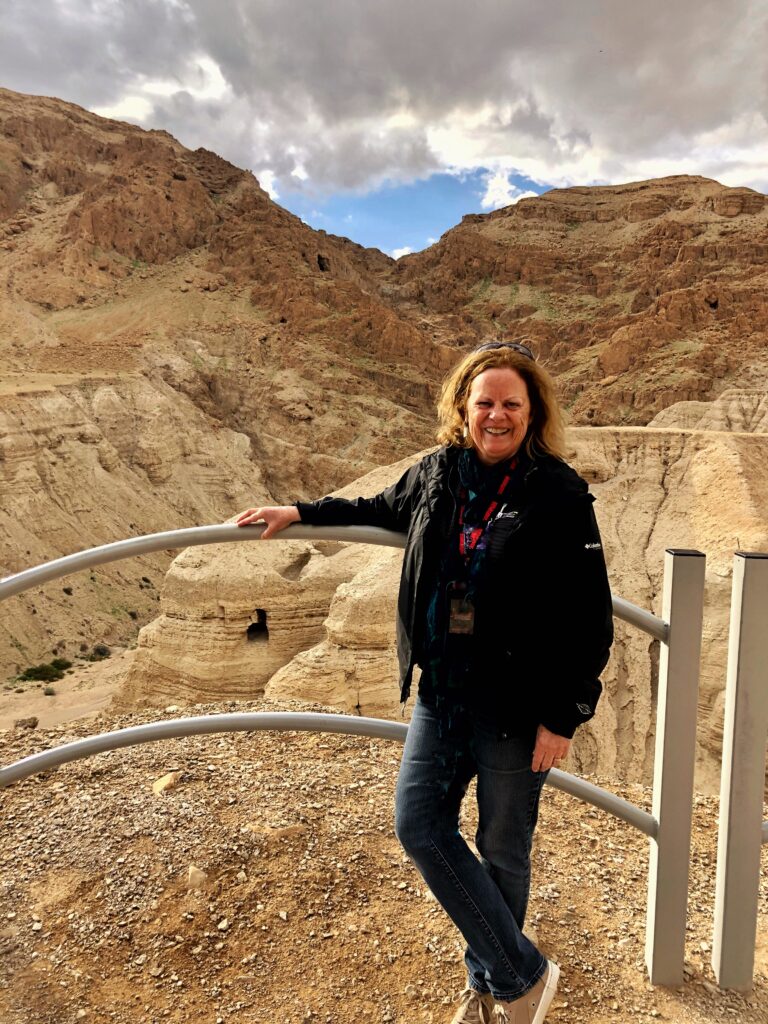Joanne McMullen • Derry Member
February 11, 2021Editor’s Note: Joanne wrote this article for a May 2020 edition of the eNews, then publication was postponed as pressing pandemic messages took precedence. Now as we approach Lent and we’re about to begin the sermon series, “Who You Meet on the Way to Jerusalem,” it seems the perfect time to share this message about Joanne’s trip to the Holy Land and some of the people she met on her travels.

A tour of the Holy Lands was never at the top of my bucket list and yet, after experiencing an amazing trip in early 2020, I encourage you to consider the possibility – at some point post-pandemic. About two years ago, I was intrigued by a brochure from my daughter’s church in Northern Virginia that detailed an upcoming trip and I decided to jump on the tour bus with those Methodists and other tag-alongs. As a result of my experiences in the Holy Lands, I will never read the Bible, listen to the news from the Middle East or look at a map of the area in the same way again.
Did you know that the Sea of Galilee is actually a freshwater lake and not nearly as big as you might imagine? Other observations included shepherds still herding their sheep just outside of Jerusalem, learning about real forms of life at the bottom of the “Dead” Sea while effortlessly floating on its waters and realizing that even in the middle of the desert it is cold and snows in January. I also learned that the geography of the West Bank is best compared to that of Swiss cheese and is very removed in many ways from the Gaza Strip.
One of my most memorable moments was participating in a communion service at the Garden Tomb while hearing the Muslim call to prayer being blasted in the background. It was a moment of understanding that the Holy Lands is an amazing place that tries to combine many cultures and faiths into the daily pattern of life for its residents and visitors.
While planning a trip to the Holy Lands, I strongly recommend finding a local tour guide who can put a Middle-Eastern perspective on everything you see and experience. Our tour guide was a Palestinian Catholic gentleman who grew up in Old Jerusalem and lives there with his wife and daughters.
At the top of my list of experiences were the two dinners I enjoyed in the homes of two very different local families. The first dinner was hosted by a Palestinian Catholic family who lives in Bethlehem and is able to trace their ancestors through their local parish all the way to the beginning of current record keeping – more than 400 years ago! They are a wonderful, gracious family who told us they feel like they are prisoners under Israeli rule. For example, most Palestinians are not allowed to use the TelAviv airport and instead must travel to Amman, Jordan to board a plane. My second dinner was hosted by a Jewish family who keeps Kosher in Tel Aviv. They were equally as gracious and happy to share their unique perspective on life in Israel. I quickly realized that, although they desperately want it, there will probably never be peace in this region, especially with the corruption that was evident and the long and diverse cultural history.
After 10 days in Israel, we crossed the border to the country of Jordan. Jordan can be nicknamed the “Switzerland” of the Middle East due to its neutral alignments. It was very different than Israel but no less fascinating. The population of Jordan is 98% Muslim but that doesn’t stop alcohol sales or western influences. I recommend including Petra, Jerash and banks of the Dead Sea on your Jordan itinerary.
Although my new post-COVID travel destination bucket list includes many places, I would love to explore the Holy Lands again someday. I felt very safe throughout my trip and although the area lacks natural beauty, it more than makes up for that in cultural and historical significance – especially for those looking to experience the food and people, to learn more about the origins of our Christian faith, or to literally retrace the steps of Christ.